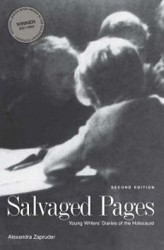Named one of Book Riot’s BEST BIOGRAPHIES OF 2022
The extraordinary true story of a courageous school principal who saw the dangers of Nazi Germany and took drastic steps to save those in harm’s way
In 1933, the same year Hitler came to power, schoolteacher Anna Essinger saved her small, progressive school from Nazi Germany. Anna had read Mein Kampf and knew the terrible danger that Hitler’s hate-fueled ideologies posed to her pupils, so she hatched a courageous and daring plan: to smuggle her school to the safety of England.
As the school she established in Kent, England, flourished despite the many challenges it faced, the news from her home country continued to darken. Anna watched as Europe slid toward war, with devastating consequences for the Jewish children left behind. In time, Anna would take in orphans who had given up all hope: the survivors of unimaginable horrors. Anna’s school offered these scarred children the love and security they needed to rebuild their lives.
Featuring moving firsthand testimony from surviving pupils, and drawing from letters, diaries, and present-day interviews, The School that Escaped the Nazis is a dramatic human tale that offers a unique perspective on Nazi persecution and the Holocaust. It is also the story of one woman’s refusal to allow her belief in a better world to be overtaken by hatred and violence.

The School that Escaped the Nazis: The True Story of the Schoolteacher Who Defied Hitler
Discussion Questions
Deborah Cadbury tells the astonishing and inspiring story of Anna Essinger, the brave head of a progressive elementary school in Germany who read Mein Kampf and foresaw the grave threat that Hitler posed to her, as a Jew, and to the many Jewish students in her school. After Hitler came to power in 1933, she not only organized her own surreptitious escape from Germany, but also managed to smuggle seventy of her young students out of Germany and to re-establish her school in Kent, England
Anna was amazingly resourceful in gaining support for her school in England and overcame obstacle after obstacle to continue educating her students according to the progressive principles she had long embraced. Over time, “Tante Anna” and her staff not only kept the school going under exceedingly difficult circumstances; they also offered a haven for an additional influx of Jewish refugee children who, as conditions worsened, fled to England from Nazi Germany.
While this would at first appear to be a book about an unusual school that saved child refugees from the Holocaust, we see it as a unique portrait of the history of the Holocaust because it is history told through the experiences of Jewish children. That history began in Germany with the assaults on students in Anna’s original school. Then, when Hitler’s efforts expanded to murder the Jews in the rest of Europe, new waves of students, many of them orphans, continued to reach Anna’s new school in England. Many of them came from Poland and other countries in Eastern Europe where the children had been in camps and/or had survived by hiding and passing. As Cadbury tells their stories, often in their own words, she also carries us through the historical course of the Holocaust through their eyes.
Cadbury is an artful storyteller and her focus on the children’s testimonies and letters makes the book exceptionally moving. Through their eyes, we come to understand how in spite of all they had been through, the empathetic environment of the school and the heroic work of Tante Anna and her staff helped them to heal and to thrive.

Help support the Jewish Book Council.


